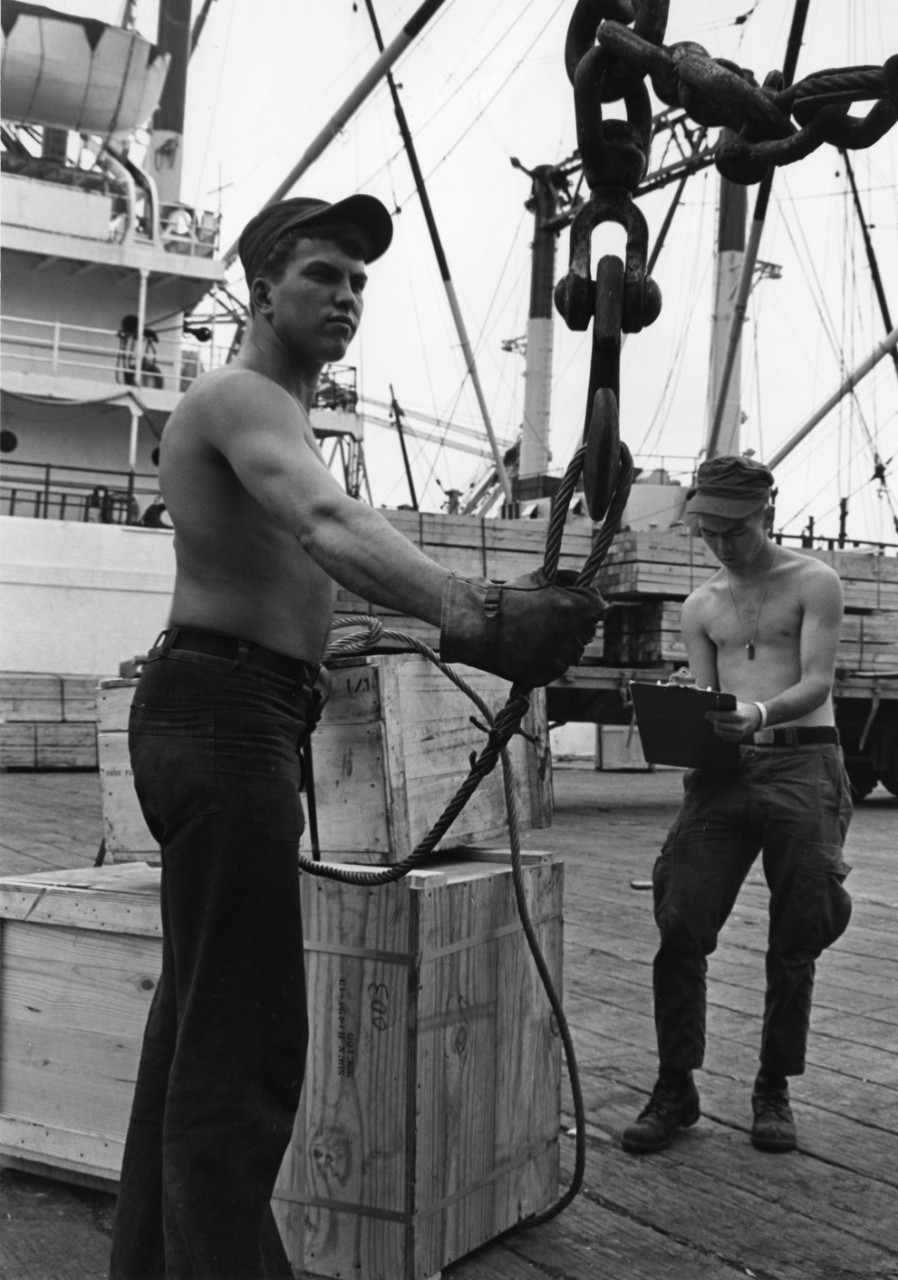Share
Connect
- Expand navigation for Beginnings Beginnings
- Why Did the U.S. Go to War in Vietnam?
- Expand navigation for Naval Advisors in Vietnam Naval Advisors in Vietnam
- Expand navigation for Passage to Freedom Passage to Freedom
- The Seventh Fleet Arrives
- Expand navigation for The Gulf of Tonkin Incidents August 2-4, 1964 The Gulf of Tonkin Incidents August 2-4, 1964
- Voices from the War
- Expand navigation for Intelligence & Special Operations Intelligence & Special Operations
- Knowing the Enemy: Naval Intelligence During the War
- Expand navigation for The Enemy The Enemy
- Expand navigation for Intelligence by Land, Sea, and Air Intelligence by Land, Sea, and Air
- Expand navigation for SEALs SEALs
- Voices from the War
- Expand navigation for Surface Navy Surface Navy
- The War at Sea
- Expand navigation for Naval Gunfire Support Naval Gunfire Support
- Expand navigation for The Big Guns The Big Guns
- Operation Market Time
- Expand navigation for Air Defense Air Defense
- Voices from the War
- Expand navigation for Air Power Air Power
- Expand navigation for From the Waves to the Skies From the Waves to the Skies
- Expand navigation for Operation Rolling Thunder Operation Rolling Thunder
- Operation Linebacker I & II
- Expand navigation for A Navy in Flames: Carrier Fires in Vietnam A Navy in Flames: Carrier Fires in Vietnam
- Helicopter Support
- Expand navigation for The Seawolves The Seawolves
- Expand navigation for Prisoners of War Prisoners of War
- Voices from the War
- Expand navigation for Riverine Operations Riverine Operations
- Expand navigation for Brown Water Navy Brown Water Navy
- Expand navigation for Operation Game Warden: Keeping Shipping Channels Open Operation Game Warden: Keeping Shipping Channels Open
- Expand navigation for Weapons Weapons
- SEALORDS
- Expand navigation for Riverine Tactics Riverine Tactics
- Voices from the War
- Expand navigation for Logistics Logistics
- Expand navigation for Ready for Battle: Supporting the War Ready for Battle: Supporting the War
- Expand navigation for Build, Repair, Defend: The Seabees in Vietnam Build, Repair, Defend: The Seabees in Vietnam
- Expand navigation for Seaborne Supplies Seaborne Supplies
- Expand navigation for From Bullets to Beans: Underway Replenishment From Bullets to Beans: Underway Replenishment
- Expand navigation for Ministry in War Ministry in War
- Expand navigation for Saving Lives Saving Lives
- Corpsman Up!
- Expand navigation for Delivering Supplies and Troops Delivering Supplies and Troops
- Voices from the War
- Expand navigation for Conclusion Conclusion
- Expand navigation for Vietnamization Vietnamization
- Expand navigation for The War Goes On The War Goes On
- Expand navigation for Operation Homecoming Operation Homecoming
- Expand navigation for Operation Frequent Wind Operation Frequent Wind
- Expand navigation for Unrest at Sea Unrest at Sea
- Expand navigation for War's End War's End
- Voices from the War
- Expand navigation for Exhibit Publications Exhibit Publications
Tags
Related Content
Topic
- Places--Foreign
- Equipment
- Logistics
- People-Places-Things--Vietnamese
- Operations
- Places-Shore Facilities--Bases-Stations-Labs-Installations
- Exhibits
- Boats-Ships--Support Ships
Document Type
- Themed Collection
- Photograph
- Historical Summary
Wars & Conflicts
- Vietnam Conflict 1962-1975
Navy Communities
File Formats
- Image (gif, jpg, tiff)
Location of Archival Materials
- Hampton Roads Naval Museum
Author Name
Place of Event
Recipient Name

Caption:
Seaman John Dahlgreen unhooks shroud lines from crates while Seaman Phillip Rasnake records their arrival on his clipboard in 1969. (Naval History and Heritage Command)
Seaborne Supplies
America’s naval and merchant ships mounted a monumental oceangoing logistics effort from 1965 to 1973. The MSTS (renamed the Military Sealift Command in 1970) enabled the United States to sustain an eight-year conflict, 7,000 miles from American shores. Forming a “steel bridge” across the vast Pacific Ocean, the U.S. Merchant Marine transported 99% of the ammunition and fuel and 95% of the supplies, vehicles, and construction materials employed by allied forces in the war. The effort came with a cost: the enemy sank eleven U.S. merchant ships during the war.
- Accessibility/Section 508 |
- Employee Login |
- FOIA |
- NHHC IG |
- Privacy |
- Webmaster |
- Navy.mil |
- Navy Recruiting |
- Careers |
- USA.gov |
- USA Jobs
- No Fear Act |
- Site Map |
- This is an official U.S. Navy web site


